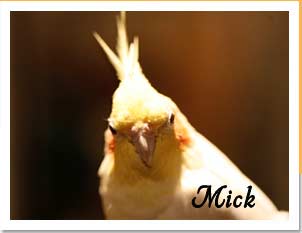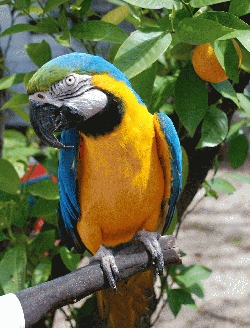Oiled Wildlife
By Dr.Bing Dilts, San Francisco Animal Care and Control

(Editor’s Note: Mickaboo’s mission focuses on the care of companion birds. That said, we know many of our newsletter readers care about their wild cousins and feel compelled to help when a local oil spill occurs. This article speaks to how oiled wildlife can be assisted.)
Whenever there is an oil spill in California, wildlife is affected. The Oiled Wildlife Care Network (OWCN) is the main agency that responds to oil spills all over the state. Their website, www.owcn.org has a wealth of information on what happens in an oil spill and how people can help. They have training webinars throughout the year for people affiliated with their member organizations (Marine and Wildlife Centers, Universities, some Animal Shelters). They are the organization that every municipality near water calls when there is an oil spill. They set up temporary care facilities at the site of the spill and then transfer the birds and animals to primary care facilities all over the state. The following information is taken from their website.
Effects of Oil on Wildlife
Even short term exposure to either light (kerosene, jet fuel) or heavy (crude oil) petroleum products can have serious effects. This can range from chemical burns to the skin, neurological signs and lung damage to death. Seabirds firstly lose their waterproofing due to the oil physically altering the feather structure. When oiled, the feathers lose the ability to trap air and repel water, which means that the bird can no longer maintain its body heat and becomes hypothermic. They can also ingest the toxic oil, causing ulcers in the gastrointestinal tract, decreasing the ability to digest food and creating diarrhea. If the oil is inhaled, pneumonia can result. The liver and kidneys can become damaged, there can be embryo damage to eggs and the affected birds will abandon their nests.
Marine mammals are affected in different ways. Heavily furred animals such as sea otters and fur seals will have a similar loss of the ability to trap air and keep themselves warm; thus, they become hypothermic. Other marine mammals without heavy hair coats (seals, dolphins, whales) can experience chemical burns that can become infected. All mammals can ingest the oil, which leads to injuries to the gastrointestinal tract, liver, kidneys and reproductive system. Inhalation of the oil can lead to inflammation and pneumonia.
Rescue and Treatment of Oiled Wildlife
After an oil spill has been detected, the following steps are taken to care for the affected wildlife:
1) Search and Collection of both live and dead wildlife
2) Intake into a OWCN facility (physical exam, photograph, medical record)
3) Pre-Wash Stabilization (warming up the animal, feeding and hydrating it for up to 2 days)
4) Cleaning (washing in a series of tubs using a standard protocol and then placing the animal in a drying pen)
5) Pre-Release Conditioning (Animals are placed in outdoor pools to groom themselves to restore waterproofing. This can take 5 days to several months if they are also injured.)
6) Release (Evaluation of fitness of the animal for release. If the animal isn’t fit, it is held until it is. It is then released into a clean area.)
7) Post-Release Assessment (If the animal had a radiotelemetry device attached to it prior to release, it can be monitored to see how it survives post-release.)
To Report an Oiled Animal
If you find an oiled animal, don’t touch it or try to approach it. Call the OWCN response hotline at 1-877-823-6926 and tell them where the animal is and what it is. They will provide you with additional information and may direct you to a local OWCN member organization which can assist you.

